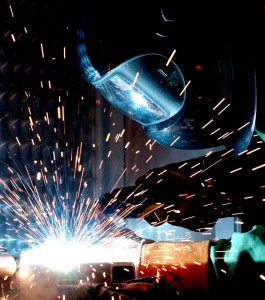
 Become a PowerPoint Guru by Dave Tracy
Become a PowerPoint Guru by Dave Tracy
Learn the methodologies, frameworks, and tricks used by Management Consultants to create executive presentations in the business world.

 Become a PowerPoint Guru by Dave Tracy
Become a PowerPoint Guru by Dave Tracy
 Manufacturing today entails immediate yet informed decision making. However, with increasing levels of sophistication and production, senior leadership often has limited time to make optimum decisions pertaining to the number of unanticipated issues surfacing from time to time. These issues—if not managed properly and timely—can lead to defects and wastes.
Manufacturing today entails immediate yet informed decision making. However, with increasing levels of sophistication and production, senior leadership often has limited time to make optimum decisions pertaining to the number of unanticipated issues surfacing from time to time. These issues—if not managed properly and timely—can lead to defects and wastes.
Top global enterprises are utilizing innovation and creative ways to enable prompt decision making. Specifically, they are using Internet of Things (IoT) to effectively handle critical aspects of manufacturing. Successful implementation of a Manufacturing IoT system facilitates in automating key tasks, decisions and processes; curtailing scrap and rework; and enhancing productivity.
People often object to implementing an IoT system by citing other important projects that they are already undertaking and the resource and time constraints as pressing hurdles. To work around these limitations, manufacturers can engage 3rd party consultants having proven expertise in end-to-end successful IoT, Asset Tracking, and manufacturing systems deployment.
Implementing a Manufacturing IoT System leverages immense benefits, including:
However, harnessing IoT necessitates careful deliberation and planning. The core requirements to effectively implement a Manufacturing IoT system can be segregated into 2 broad categories:
Functional Requirements (FR) describe the system or its components. FR provide a description of services that the Manufacturing IoT system must offer. FR for Manufacturing IoT may include:
All systems require availability of certain software resources, functionalities, or other hardware components. These prerequisites have to be met in the design of a system. Typical System Requirements for manufacturing IoT may include:
Let’s delve deeper into some of the Functional Requirements for now.
The system should be able to manage multiple assets and add new assets. It should be capable of:
The IoT system should be able to:
The system should maintain:
The IoT manufacturing system should record all maintenance needs and maintenance activity performed on an asset. Specifically it should:
The IoT manufacturing system should:
Interested in learning more about the details of other Functional and System Requirements of a Manufacturing IoT system? You can download an editable PowerPoint on Manufacturing: Internet of Things Implementation here on the Flevy documents marketplace.
You can download this and hundreds of other consulting frameworks and consulting training guides from the FlevyPro library.
Error: Twitter did not respond. Please wait a few minutes and refresh this page.